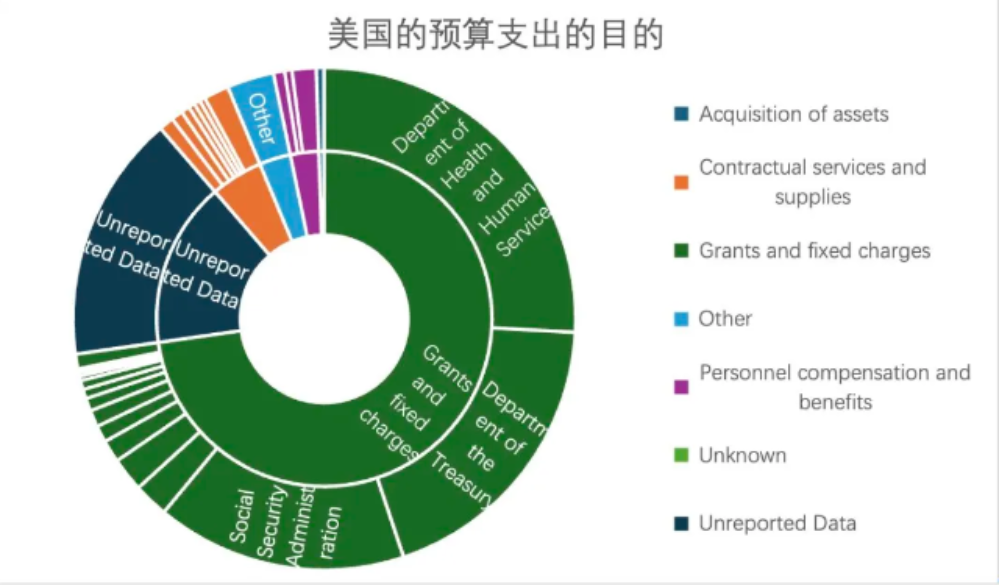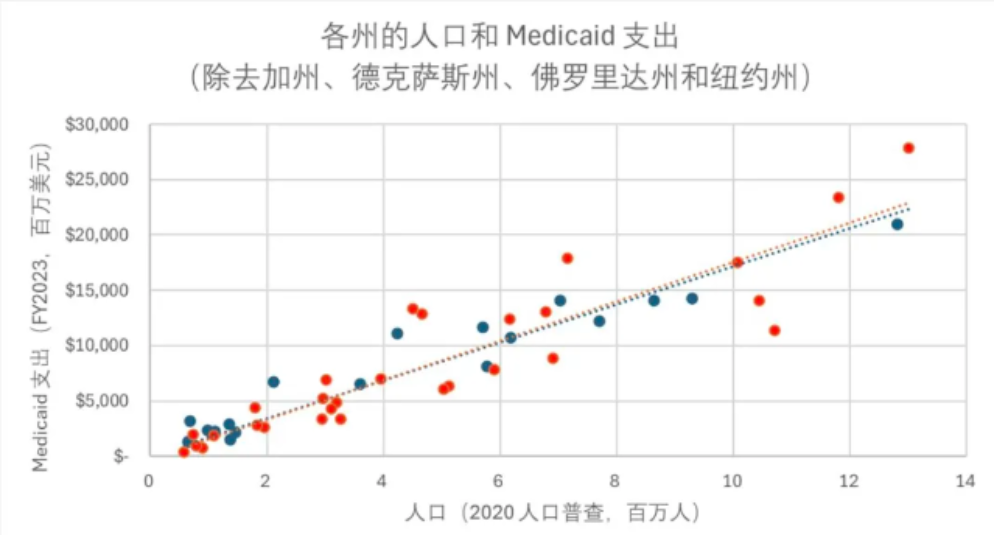On the political stage in the United States, debates surrounding the federal budget often fall into deadlock, even leading to government shutdowns. This ongoing political struggle stems from the enormous expenditures on Medicare and Medicaid, which have become one of the largest burdens on the federal budget, directly related to fiscal sustainability and the interests of voters, making it a core issue that both parties cannot avoid.

I. Huge Expenditures: Medicare as the "Ballast" of the Federal Budget
To understand why both parties are unwilling to budge on the issue of Medicare, one must first recognize its crucial position in federal finances.
● Medicare and Medicaid, along with Social Security and interest on the national debt, constitute the "four pillars" of the federal budget, consistently accounting for more than half of total expenditures.
● Specifically, the public portion of the entire Medicare system has expenditures reaching approximately $2.4 trillion. Of this, Medicare spending for seniors aged 65 and older is about $1.7 trillion, while Medicaid spending for low-income groups is around $700 billion.
● These astronomical figures mean that, on average, each of the 340 million citizens in the U.S. bears over $7,000 annually in Medicare and Social Security costs. Such a scale of expenditure makes any plans to reduce the fiscal deficit, implement tax cuts, or increase investments in other areas have to regard Medicare reform as an unavoidable "mandatory question."
II. Institutional Foundations: The "Dual Pillars" of U.S. Public Medicare
The vast and complex U.S. healthcare system has its public portion primarily built on two major institutional cornerstones.
Medicare: The "Safety Net" for Seniors
● Medicare aims to provide medical coverage for retired seniors and some disabled individuals, filling the gap left by employer-sponsored insurance after they leave the workforce. Its funding comes from a dedicated payroll tax during working years and monthly premiums paid after retirement.
However, this system is facing severe "adverse selection" challenges. In the context of globalization and differences in the purchasing power of the dollar, an increasing number of healthy and financially stable retirees are choosing to retire in countries with lower living costs, thus exiting the Medicare system. The result is that those remaining in the system have a higher average health risk, driving up overall per capita healthcare costs.
Medicaid: The "Lifeline" for the Poor
● Medicaid is a jointly funded medical assistance program by the federal and state governments, serving low-income adults and families, pregnant women, children, etc., and is commonly referred to as "white card" due to the color of its assistance cards.
● Medicaid faces another form of adverse selection. Many low-income workers avoid seeking medical care due to financial pressures, allowing minor illnesses to escalate into major ones. Ultimately, when they must seek treatment, medical expenses surge dramatically, and these costs are borne by the Medicaid system.
III. Political Gamesmanship: The Tug-of-War Over Healthcare from Obama to Trump
In the face of these structural challenges, both parties have proposed vastly different "prescriptions," making healthcare reform a focal point of ideological struggle.
Obama's "Big Government" Intervention in Healthcare
● To address the issue of adverse selection, President Obama pushed for the Affordable Care Act. Its core logic is to expand the insurance pool through government mandates: prohibiting insurance companies from denying coverage due to pre-existing conditions while mandating that nearly all U.S. citizens must purchase insurance. This reflects the Democratic Party's desire to achieve social equity by strengthening the role of government.
Trump's "Free Market" Resurgence in Healthcare Reform
● The Republican Party has consistently advocated for a small government and individual freedom, viewing the mandatory insurance provisions of Obama's healthcare plan as an infringement on personal choice. President Trump effectively eliminated the penalty for not having insurance, essentially abolishing that provision. This move was widely popular among his supporters, who viewed mandatory insurance as an unfair "wealth transfer."

Geopolitical Divides in "Red" and "Blue" States
● The healthcare debate also profoundly reflects the geopolitical divides in the U.S. Democrat-led "blue states," which have higher concentrations of impoverished populations and immigrants, generally have higher per capita Medicaid expenditures than Republican-led "red states." Additionally, many economically well-off retirees are migrating from northern blue states to southern red states, further exacerbating the divergence in healthcare interests among states.

IV. New Challenges and Future Directions: Healthcare Reform Amid Multiple Storms
Entering the 2020s, the U.S. healthcare system faces a new round of multiple shocks on top of its existing ailments.
Impact of the Pandemic and the "Gig Economy"
● The outbreak of COVID-19 led to the disappearance of numerous full-time jobs, along with the commercial health insurance tied to them. At the same time, there was a surge in "gig economy" jobs that do not provide health benefits. This structural change has led many workers to apply for Medicaid, causing expenditures to soar at an annual rate of 9%.
Long-term Pressure from the "Silver Tsunami"
● The "baby boomer" generation in the U.S. has fully reached retirement age, and this wave of "aging tsunami" has resulted in a rigid increase in the number of Medicare beneficiaries and expenditures, with an annual growth rate of 6%. This massive expenditure poses a long-term and severe challenge to U.S. finances.
Trump's "Drug Price War" and Welfare Contraction
● To control costs, the Trump administration promoted the "Most Favored Nation Drug Pricing" policy, requiring that the prices of drugs purchased by Medicare and Medicaid cannot exceed those in other developed countries. Simultaneously, his "Beautiful America Act" proposed a direct cut of 12% to the Medicaid budget and introduced strict work requirements. This plan faced fierce criticism from Democrats and even raised concerns within the Republican Party, making the prospects for the bill's passage uncertain.
The issue of U.S. healthcare expenditures has long transcended simple fiscal numbers, reflecting profound fractures in fundamental issues of fairness and efficiency, government and market, and intergenerational equity. Against the backdrop of an irreversible trend of population aging and escalating political polarization, this war over healthcare expenditures is unlikely to find a one-time solution. It is destined to become a protracted battle throughout the future political cycles of the United States, with each budget discussion potentially becoming a new battleground for the two parties. The ultimate outcome of this struggle will not only determine the health of U.S. finances but will also reshape the foundations and future of this country’s society.
Join our community to discuss and grow stronger together!
Official Telegram community: https://t.me/aicoincn
AiCoin Chinese Twitter: https://x.com/AiCoinzh
OKX benefits group: https://aicoin.com/link/chat?cid=l61eM4owQ
Binance benefits group: https://aicoin.com/link/chat?cid=ynr7d1P6Z
免责声明:本文章仅代表作者个人观点,不代表本平台的立场和观点。本文章仅供信息分享,不构成对任何人的任何投资建议。用户与作者之间的任何争议,与本平台无关。如网页中刊载的文章或图片涉及侵权,请提供相关的权利证明和身份证明发送邮件到support@aicoin.com,本平台相关工作人员将会进行核查。




